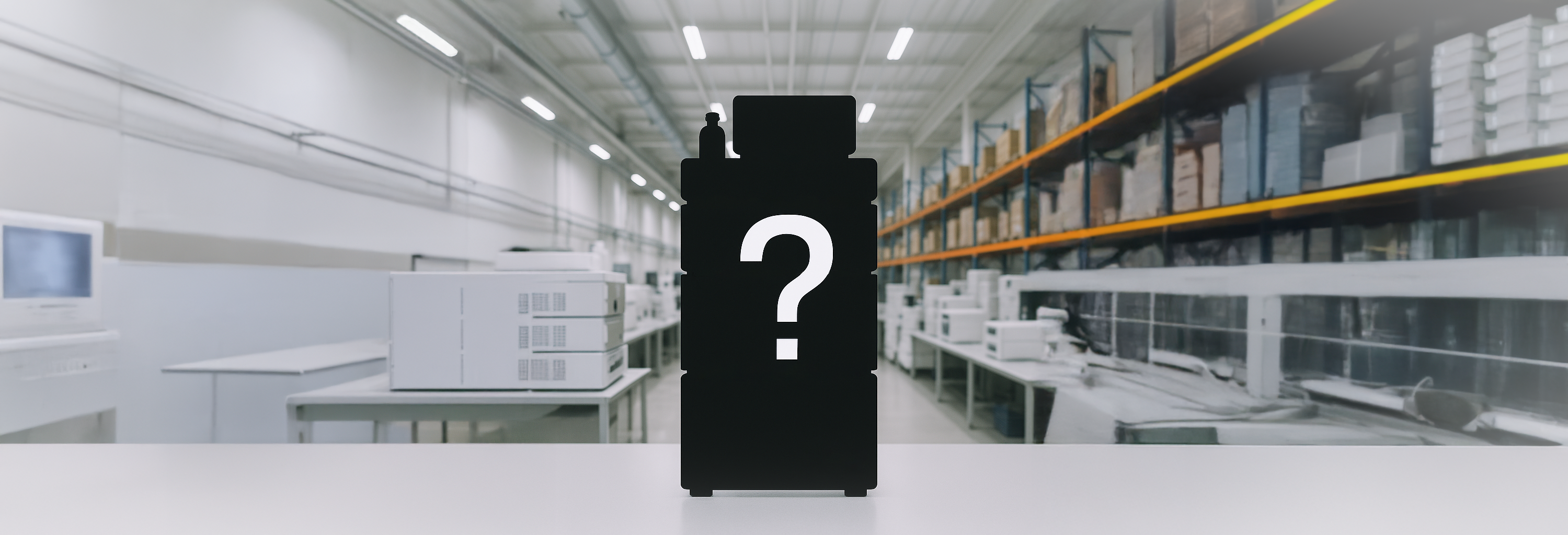Let’s face unpleasant truth — nowadays new laboratory equipment often comes with a hefty price tag that can put a strain on budgets. This is where used analytical instruments step into the picture. Buying pre-owned lab equipment can seem like a tempting solution to save money while still getting the tools you need. But is it the right choice for your lab
The answer isn’t a simple yes or no. Like any major purchase, buying refurbished analytical instruments comes with its own set of pros and cons. Whether it’s a smart move depends on a range of factors, including the type of device, its manufacturer, its condition, and the expertise of the team handling its dismantling and installation. Let’s explore the nuances to help you make an informed decision.
The Pros of Buying Used Analytical Instruments
Significant Cost Savings
The most obvious advantage of buying used lab instruments is the price. Pre-owned devices often cost a fraction of their original price, making them an attractive option for labs with tight budgets. For startups, small facilities, or research projects with limited funding, second-hand laboratory equipment can make advanced analysis possible without breaking the bank.
Quicker Availability
Lead times for new instruments can sometimes stretch into months. Used instruments, on the other hand, are often ready to ship immediately, getting your lab up and running faster.
Access to High-End Models
Purchasing pre-owned analytical instruments may allow you to afford higher-end or more advanced models than you could if you were buying new. This can be especially beneficial for labs that need specific features but don’t have the budget for the latest generation of devices.
Established Performance Records
Some analytical instruments have a reputation for being robust, long-lasting, and reliable. If you’re purchasing a well-regarded model from a trusted manufacturer, you might be getting a device that has already proven its worth.
The Cons of Buying Used Analytical Instruments
Limited Warranty and Support
One of the biggest downsides is that used instruments often come with little to no warranty. If something goes wrong, you could be left footing the repair bill. Additionally, manufacturers may not provide technical support or service for older models, leaving you reliant on third-party providers.
Unknown History
You don’t always know how the previous owner used or maintained the device. If it wasn’t properly cared for, it might have hidden issues that only surface after you’ve started using it.
Compatibility and Obsolescence
Older instruments may not be compatible with modern software, accessories, or consumables. There’s also the risk of obsolescence—if the manufacturer no longer supports the model, finding replacement parts or service technicians could be a challenge.
Risky Installation and Setup
Moving and reinstalling analytical instruments is no small feat. Without qualified professionals to handle dismantling, transport, and reinstallation, there’s a risk of damage or improper setup, which could compromise the instrument’s performance.
It Depends on the Instrument and the Manufacture
The decision to buy used equipment depends heavily on the type of device and its manufacturer. Some analytical instruments are built to last, with designs and components that hold up well over time. For instance, many older models of mass spectrometers, chromatography systems, and spectrometers from reputable brands have a reputation for being workhorses.
On the other hand, some instruments—especially those with delicate components or cutting-edge features—may have a shorter effective lifespan. Wear and tear, advancements in technology, or reliance on proprietary consumables can make these models less appealing as used purchases. Researching the track record of the specific instrument and manufacturer is crucial.
The Importance of Professional Expertise
When buying used instruments, the expertise of the team handling the process can make or break your investment. Dismantling and moving analytical equipment is a delicate operation. Improper handling can lead to misalignment, damage, or contamination of sensitive components.
Equally important is the installation process. A skilled technician will ensure that the device is correctly set up, calibrated, and tested in its new environment. If you’re considering a used purchase, make sure the seller or a trusted third-party service provider has the qualifications to handle these tasks properly.
Making an Informed Decision
If you’re weighing the pros and cons of buying a used analytical instrument, here are some tips to guide your decision:
Research Thoroughly: Look into the specific model and manufacturer. Are there known issues with longevity or compatibility? Does the device have a good reputation for reliability?
Ask About Maintenance History: Request records of the instrument’s usage, servicing, and any repairs. A well-maintained device is less likely to give you trouble.
Work with Reputable Sellers: Choose a seller with a track record of providing quality refurbished lab equipment. Some vendors even refurbish instruments and offer limited warranties.
Plan for Installation: Budget for professional dismantling, transport, and installation. Don’t cut corners on this step—it’s critical to the instrument’s performance.
Evaluate Long-Term Costs: Consider not just the upfront cost but also potential expenses for repairs, maintenance, and consumables. Make sure these align with your budget and needs.
A Balanced Approach
Buying used analytical instruments can be a smart move, especially for labs looking to save money or access high-end models. But it’s not without risks. The key is to approach the decision thoughtfully, armed with knowledge about the device, its condition, and the support available. By doing your homework and working with professionals, you can turn a used purchase into a valuable addition to your lab—without the headaches.

